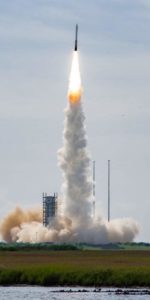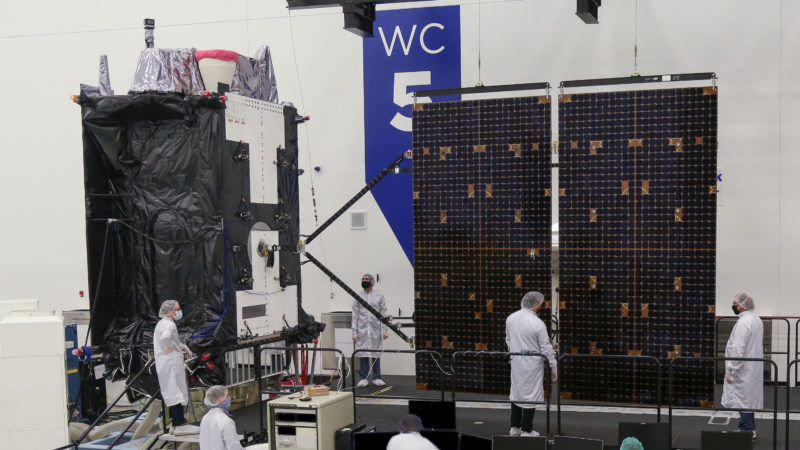
SpaceX is gearing up for its third mission of June, following Saturday’s successful Static Fire Test of the once-flown B1062 core stage on storied Space Launch Complex (SLC)-40 at Cape Canaveral Space Force Station, Fla. Liftoff of the veteran Falcon 9—in what promises to be SpaceX’s fourth consecutive month of 2021 to see at least three launches—is targeted to occur during a 15-minute “window”, which opens at 12:09 p.m. EDT Thursday. Primary payload is the fifth Block III Global Positioning System (GPS) satellite for the U.S. Space Force, destined for Medium Earth Orbit (MEO) at an altitude of about 12,200 miles (20,000 km) above the Home Planet.
As previously reported by AmericaSpace, GPS III-05—named in honor of Apollo 11 astronaut Neil Armstrong, the first man to set foot on the Moon—was delivered to the Space Coast Regional Airport in Titusville in early April, aboard a C-17 Globemaster III cargo transport.
Built by Lockheed Martin at its customized GPS Block III facility, near Denver, Colo., it subsequently underwent several weeks of post-shipment functional testing and propellant loading. This culminated last Wednesday with the full encapsulation of the payload into its Falcon 9 fairing at Astrotech Space Operations (ASO). The bulbous fairing serves to protect GPS III-05 from the dynamic pressures and aerodynamic extremes endured during the violent climb to orbit.
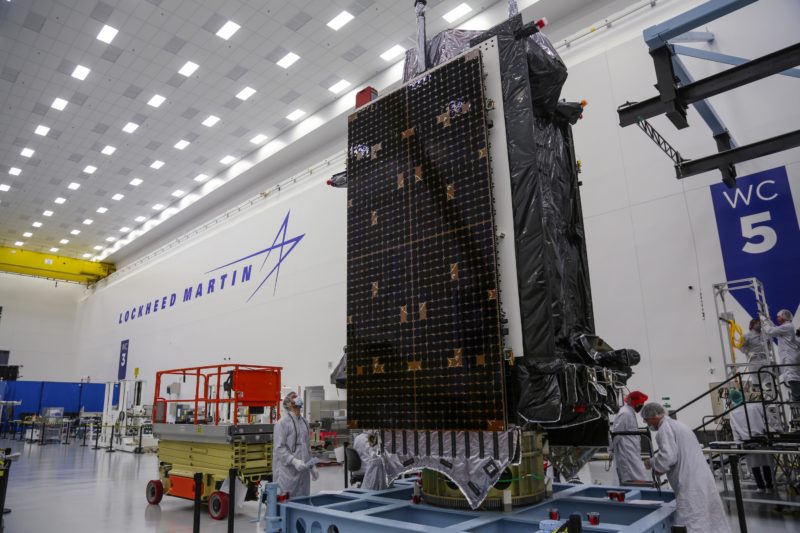
As its name implies, this is the fifth GPS Block III satellite (known as “Space Vehicle 05”, or “SV-05”) in military parlance and the fourth to ride a Falcon 9. It follows hard on the heels of last November’s GPS III-04 mission—which went on to complete its on-orbit checkout in record-breaking time—and two previous flights: GPS III-03 in June 2020 and GPS III-01 in December 2018. Another satellite in the series, GPS III-02 flew atop the final United Launch Alliance (ULA) Delta IV Medium booster in August 2019.
But whereas each of SpaceX’s three prior GPS Block III missions used brand-new Falcon 9 cores, it was announced last September that GPS III-05 would employ a previously-flown booster. That booster turned out to be the “B1062” core, which also provided the first-stage muscle to lift GPS III-04 on its way last November. Accordingly, Thursday’s mission will be the first National Security Space Launch (NSSL) to fly a used rocket.
“The GPS III program continues to make strides in modernizing the GPS constellation for the United States Space Force, maintaining the “gold standard” for position, navigation and timing,” said Col. Edward Byrne, Medium Earth Orbit Space Systems division chief. “SV-05 is not only the first-ever USSF satellite launched on a previously-flown booster, but also is the 24th Military-Code (M-Code) satellite introduced to our constellation, the last needed to bring M-Code to full operational capability.”
Building upon a GPS Navstar heritage dating back to the 1970s, Block III got underway two decades ago and the Air Force awarded Lockheed Martin a $1.4 billion contract in May 2008 to develop the first pair of Block III satellites in what will eventually comprise a 32-satellite network, with the first launch initially targeted for 2014. However, payload difficulties ultimately pushed the program’s maiden flight back by almost five years and it did not launch until December 2018.
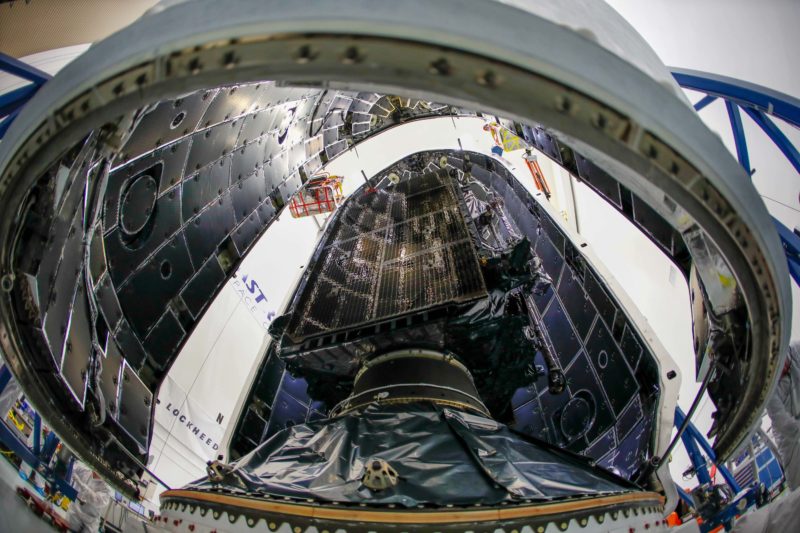
Following a Request for Proposals (RFP) issued by the Air Force in June 2017 for the fourth, fifth and sixth GPS Block III missions, SpaceX received the $290.5 million contract in March 2018. Although SpaceX delivered two Block III satellites to orbit in December 2018 and June 2020, both flew under separate contracts.
The first satellite to fly under the $290.5 million contract was last November’s GPS III-04, with Thursday’s GPS III-05 set to become the second. The sixth GPS Block III satellite is currently targeted for launch sometime next year.
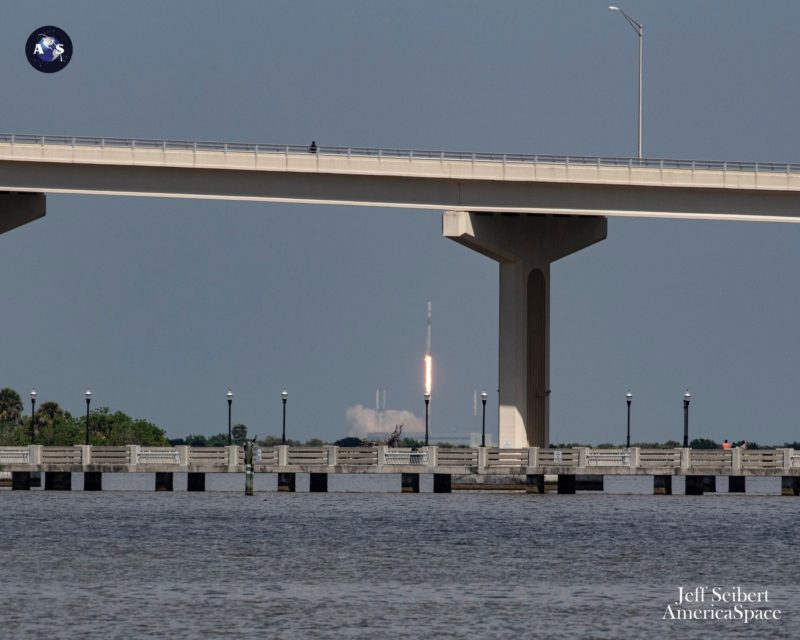
Contracts to procure long-lead-time components for GPS III-05 and GPS III-06 were awarded by the Air Force to Lockheed Martin way back in February 2013 and the firm was authorized to complete production on both satellites the following December. And when GPS III-05 arrived safely on the Space Coast in early April, it became the third satellite to be delivered for launch in less than 14 months.
Weighing 8,500 pounds (3,900 kg) and capable of a 15-year operational lifetime, these powerful satellites are built by Lockheed Martin at its customized GPS Block III facility near Denver, Colo. They are based upon the tried-and-true A2100 “bus”, whose modular framework produces 15 kilowatts of electricity via high-efficiency solar cells, radiation-cooled traveling-wave tube assemblies and improved heat-pipe design.
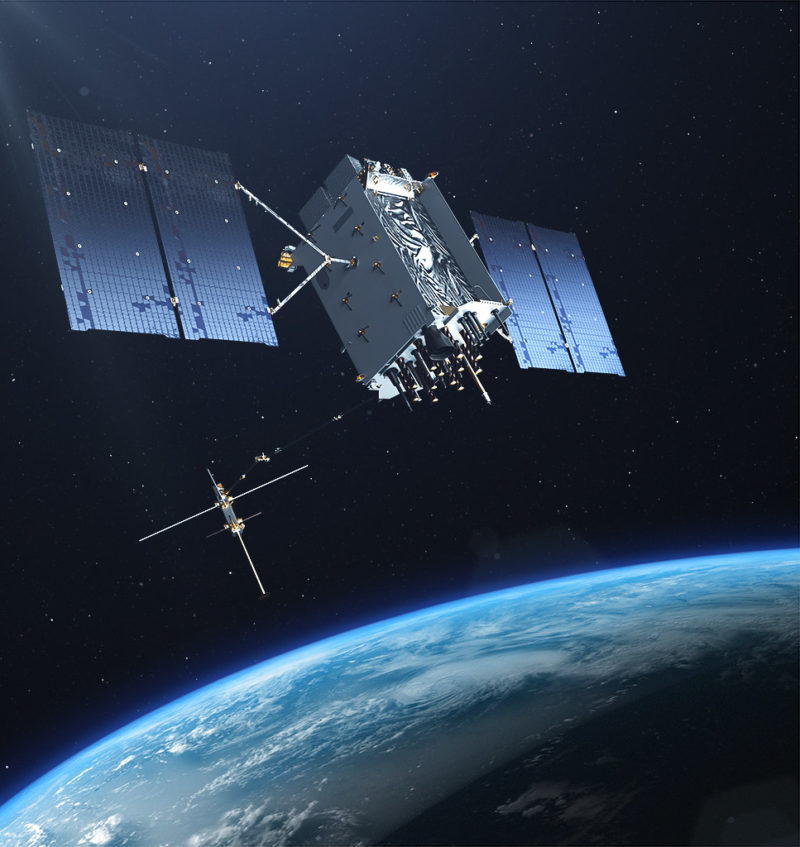
The expansive operational lifetime of each Block III bird represents a 25-percent quantum leap over earlier GPS satellite capabilities, as well as 500 times greater transmitting power, improved navigational warfare abilities, three times better accuracy and an eightfold enhancement in anti-jamming functionality.
All told, this enables GPS Block III to shut off service to limited geographical locations, whilst maintaining uninterrupted provision for U.S. and allied forces. It features a cross-linked command-and-control architecture, which permits the entire “constellation” to be updated from a singular ground station. Furthermore, the satellites showcase a “spot-beam” capability for enhanced Military-Code (“M-Code”) coverage and better resistance to hostile jamming. These enhancements are expected to lead to improved accuracy and assured availability for military and civilian GPS users worldwide.
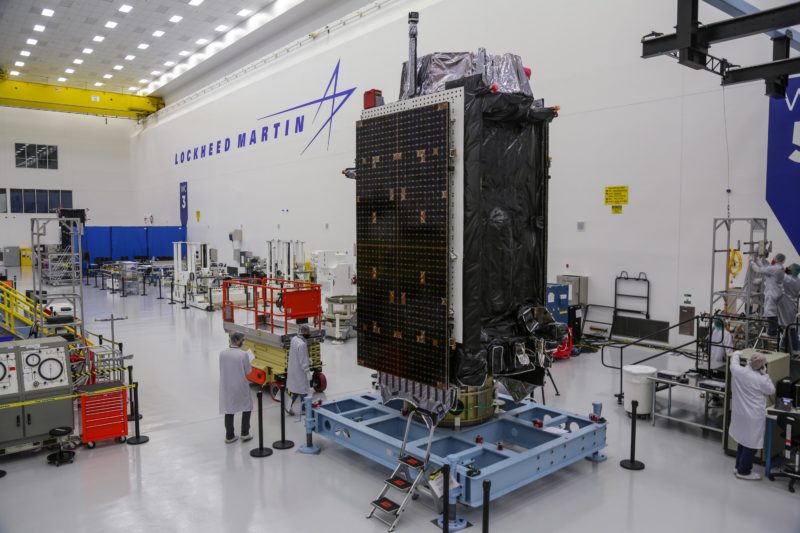
In keeping with tradition, the Block III birds are named for long-gone explorers, with the first and second honoring “Age of Sail” navigators Amerigo Vespucci and Ferdinand Magellan. More recently, the third satellite initially recognized Christopher Columbus, but was later renamed for the early 20th-century polar pioneer Matthew Henson.
And last November’s GPS III-04 paid tribute to Sacagawea, a Lemhi Shoshone woman of Idaho, who at the age of just 16 aided the Lewis and Clark Expedition to explore the Louisiana Territory in 1803-1806. She traveled with Lewis and Clark from North Dakota to the shores of the Pacific Ocean and played an important role in establishing cultural ties with Native American populations along the route. June’s GPS III-05 is named for Neil Armstrong, the first man to set foot on the Moon.
FOLLOW AmericaSpace on Facebook and Twitter!
Missions » GPS » GPS 3 »




